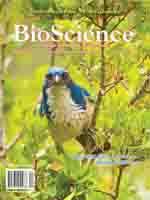Scientific societies have long held an important place in the history of science. The first scientific academy, or what we would now call a scientific society, dates from Italy in the mid-1600s. Exciting, creative research was being done within the emerging societies of this period even more so than in many universities of the time.
Today's universities and scientific societies have only a passing resemblance to those of the late Renaissance; most notably, the locus of the process of discovery has traded positions between the two. Rather than serving as a place where research is conducted, the average scientific society today plays a supporting role by publishing journals; sponsoring meetings; acting as a center for professional networks; mentoring young scholars; and, in the United States, representing the interests of members in a policy arena that includes funding agencies and Congress. But scientific societies now confront a variety of challenges. For example, why join a society to receive a journal if that journal can be accessed electronically on any computer, often at no charge? What special features do scientific societies add to professional networking that cannot be accomplished through modern social media?
These new challenges acquire a special urgency in the biological sciences, in which diverse subdisciplinary and interdisciplinary interests create a highly fragmented professional landscape. All of these changes raise some big questions: What is the place of the scientific society in the twenty-first century? And how should societies adapt to the challenges they face?
As I wrote in a recent letter to all of our members, AIBS's leadership is in the midst of a review in which we are using the institute's original mission—to advance all of the biological sciences—for imagining what we should be in the twenty-first century. Our aim is to reinforce a vision of AIBS as “a forum for integrating the life sciences”; indeed, beginning in January 2012, that phrase will be the new tagline for BioScience. The change reflects the institute's commitment to representing the features of our science that unite us around a central set of methods, concepts, and theories in biology, informed by a context drawn from the history and philosophy of science. Emphasizing our common interests, principles, and values while increasing the breadth and depth of our community will also improve the likelihood that our science is used to inform decisionmaking in policy arenas.
The mission of scientific societies has changed since they emerged in the seventeenth century. Today's scholarly societies must continue changing in response to the fast-paced culture of science and the evolving needs of the professionals they serve. What are the features of a productive and creative transformation of scientific societies that will ensure the welfare of research and education in the life sciences far into the twenty-first century? To answer this question, AIBS is drawing on a rich history and a worthy mission to chart a creative course through the first decades of this century of biology.
During the next year, you will be hearing more about change at AIBS as we continue imagining our future. It has been a privilege to serve as president during this exciting time.





